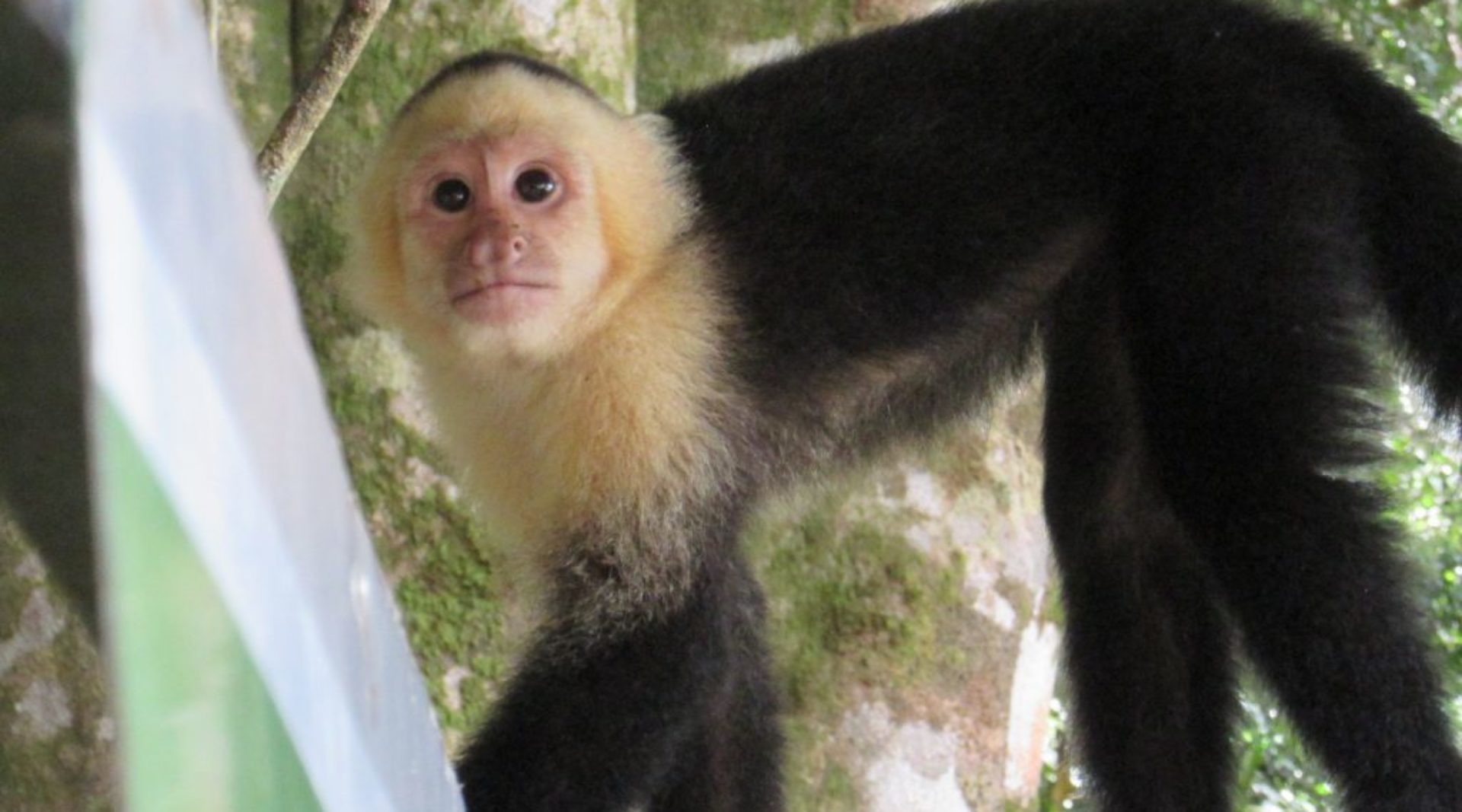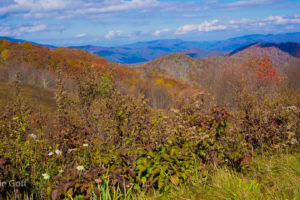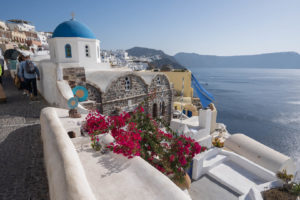A Blue Flag Beach is More Natural, Clean, and Exciting – Do you want a Blue Flag Beach?
Playa Espadilla Sur was abuzz with activity when we arrived. Capuchin monkeys, coatis, and raccoons scrambled around our feet. They appeared to coexist harmoniously with the sunbathers on the beach. Seeing wildlife on the beach seemed natural, exciting, and fun. Our eco adventurers had arrived at Playa Espadilla Sur, part of Manuel Antonio National Park, Costa Rica. The love of wildlife is one thing that designates Playa Esadilla Sur as a Blue Flag Beach.
The wildlife on the beach was not harmful to people, nor were they afraid of them.
As the sunbather’s backs were turned, the mischievous monkeys got busy. The capuchin monkeys have learned to work together to get the lunch of unsuspecting sunbathers. At first glance, the pillaging looked haphazard. Later, while editing my pictures, I saw that the monkeys used a clever strategy. The males struck fierce poses to grab the people’s attention. In the meantime, the females pilfered lunch bags. Even the babies astride the backs of the Mamas pitched in to nab the goods. Soon after the plundering, we could see Mama and Baby enjoying cookies in the branches of a nearby tree.
The surrounding community’s love of wildlife is one reason Playa Espadilla Sur is designated a Blue Flag Beach.
The Foundation for Environmental Education (FEE) designates Blue Flag status to beaches worldwide. The nonprofit employs strict criteria in its designation of Blue Flag status for beaches, marinas, and sustainable boating tourism operators. Created in France in 1985, 65 organizations in 77 member countries now use the annual certification program.
Playa Espadilla Sur, like many beaches in Costa Rica, is a Blue Flag beach. The designation is complex to get and maintain. It means that officials from public and nongovernmental agency officials evaluate the beach every year. They check for cleanliness, tourist safety, environmental education, and community involvement in beach maintenance. The inspection is comprehensive. It includes the ocean’s water quality, drinking water, waste disposal, sanitary facilities, signage, tourist safety, and environmental education.
“Spain is the global leader in Blue Flag status, with 629 beaches and 97 marinas holding the certificate.” – “Which Country has the Most Blue Flag Beaches in the World?” Euro Weekly, by John Ensor, 19 Nov 2023
In 2023, The American Shore and Beach Preservation Association (ASBPA) announced two beaches in the U.S. as the first Blue Flag beaches in the continental United States.
Westward Beach is in Malibu, California, and Delray Beach is in Delray, Florida now fly Blue Flags!
“Sites worked hard for months to implement and maintain 30 diverse criteria to achieve award status.” – Blue Flag Sites, May 23, 2023
Inspectors monitor participants routinely for sustained care. Local communities strive to achieve and maintain the designation. Read more about the Blue Flag Ecology Program at http://www.blueflag.global.
Learn more about the program at blueflag.us
Do you want a Blue Flag Beach?

More stories about our natural world by Marie Goff at Travel Notes and Storytelling:






